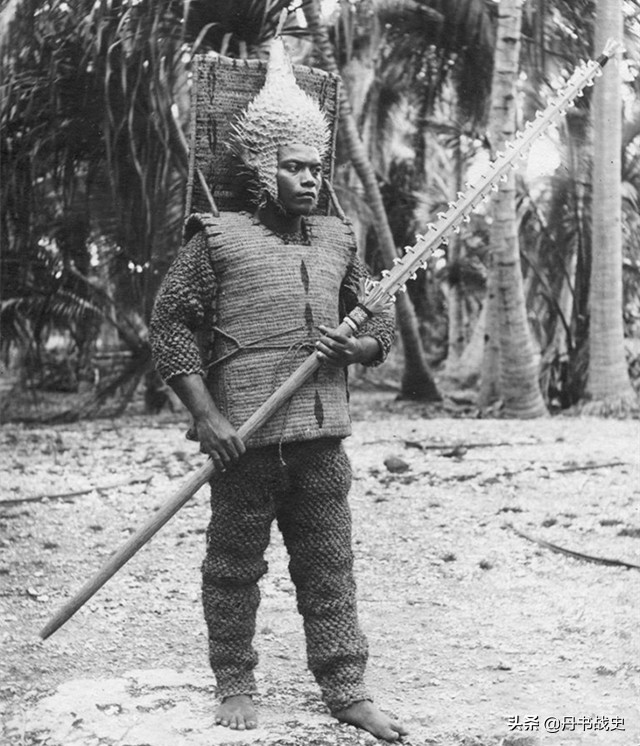Kiribati is an island country in the middle of the Pacific Ocean, composed of more than 300 islands, across the equator, belongs to the tropical oceanic climate, this country has no sense of existence in history, because there is no written record, even archaeology can not get much useful information, this area and the world close contact occurred in the 19th century, France in 1824 marked it on the map, and later became a supply base for whaling ships, the crew found that this area is actually composed of many more primitive tribes, frequent fights between each other, Elite soldiers are armed with knives made of shark teeth and armor made of coconut fiber.

Like other remote tropical islands at the time, the area of Kiribati was still very technologically backward, metal could not be widely used on a large scale, the scale of the battle between the tribes was not large, the weapons used by both sides were mostly made of hardwood, and the protective gear was also made of local materials. According to one historian, he believed that at that time, the two tribes would each send a warrior, wearing coconut armor to fight, and injuries were inevitable, but in principle, intentional killing was not allowed, and the winning tribe would gain the benefits of the conflict.
Although this set of armor looks simple, it is actually not easy to make, and the main materials are the fibers inside the coconut shell, fish skin and human hair. People first tear off the fibers in the coconut shell by hand, soak them in running water for 2 to 3 months, and then rub them out to dry, these fibers will be added to the hair and hand-rolled into small ropes, the hair is usually from women, the rope is soft and strong and wear-resistant, the locals not only use the rope to weave armor, but also use it to weave mats, futons and other daily necessities.
Coconut rope is used to weave armor to protect different parts, including vests, tops, helmets, back plates, pants, and sometimes aprons, although the coconut fiber is relatively soft, but the whole body is still very affective of the soldier's activities, it is said that there will be special assistants to help the soldiers stand before the fight.
The armor weaving pays attention to the way and method, through the photo can see the different techniques of the top and vest, and the vest and back plate have different patterns. The top is like a knit shirt, relatively soft, but also protect the arms of the soldier, the pants are one-piece, the protection ability and the top are equal, the vest is a thick protective gear, which can enhance the protective ability of the torso position, the helmet is of course a protective gear to protect the head, but the helmet woven with coconut rope can be used alone and can also be used as an inner liner.
The back plate has some controversy, it is a large piece of weaving standing behind the soldier, one theory is to protect the neck of the soldier, the other is that the women on both sides will throw stones to hit the other player during the fight, this board is used to protect the back of the player from being accidentally injured by their own women, in fact, we can not rule out that this board has a decorative function, just like the Polish wing cavalry, carrying a pair of wings seems to be very imposing.
We mentioned earlier that there is also an important raw material in the production materials that is the fish skin, the use of the fish skin is mainly in the helmet and vest, generally with the sun-dried ray fish skin to protect the chest and back area, and the helmet will be covered with sun-dried stinging puffer skin, both the role of protection, full of thorns and appear very powerful, the thorn itself should also have the ability to hurt.
So how protective is this set of armor? This brings us to the "big knife" in the hands of the soldiers at that time, which was not made of metal, but slotted in hardwood, embedded with shark teeth, and tied tightly with coconut rope. In addition to the shape of the knife, there are also some long spears and wolf's tooth sticks. It's not easy to judge how powerful this weapon is, but coconut armor should provide better protection.
The first time coconut armor was brought to the outside world may have occurred in 1824, it was brought to London, it aroused great interest, it is not surprising, people always want to know more about the unknown, after that coconut armor became a relatively high-end collection in Western countries, and major museums also competed to buy good-quality armor for exhibits.